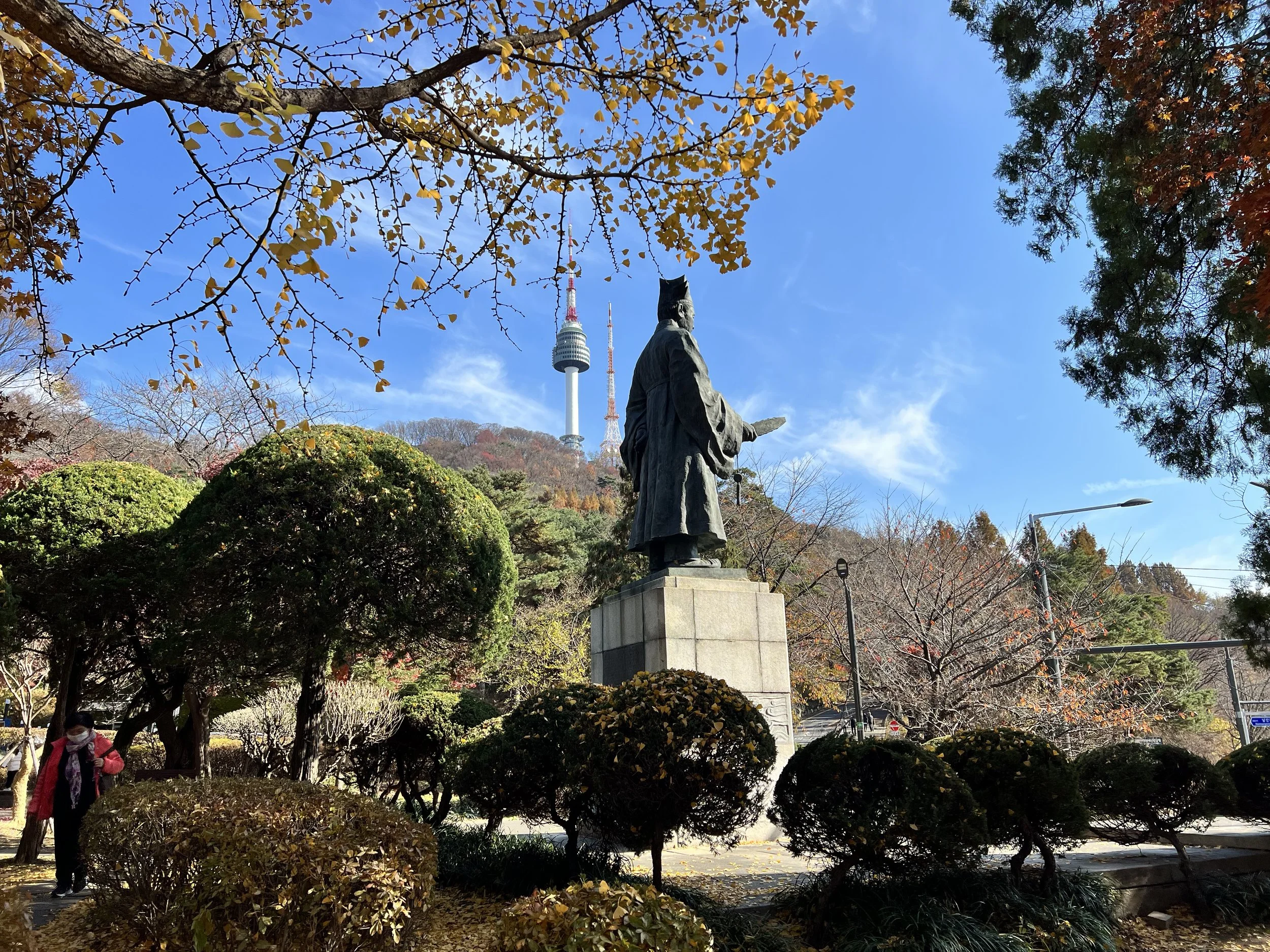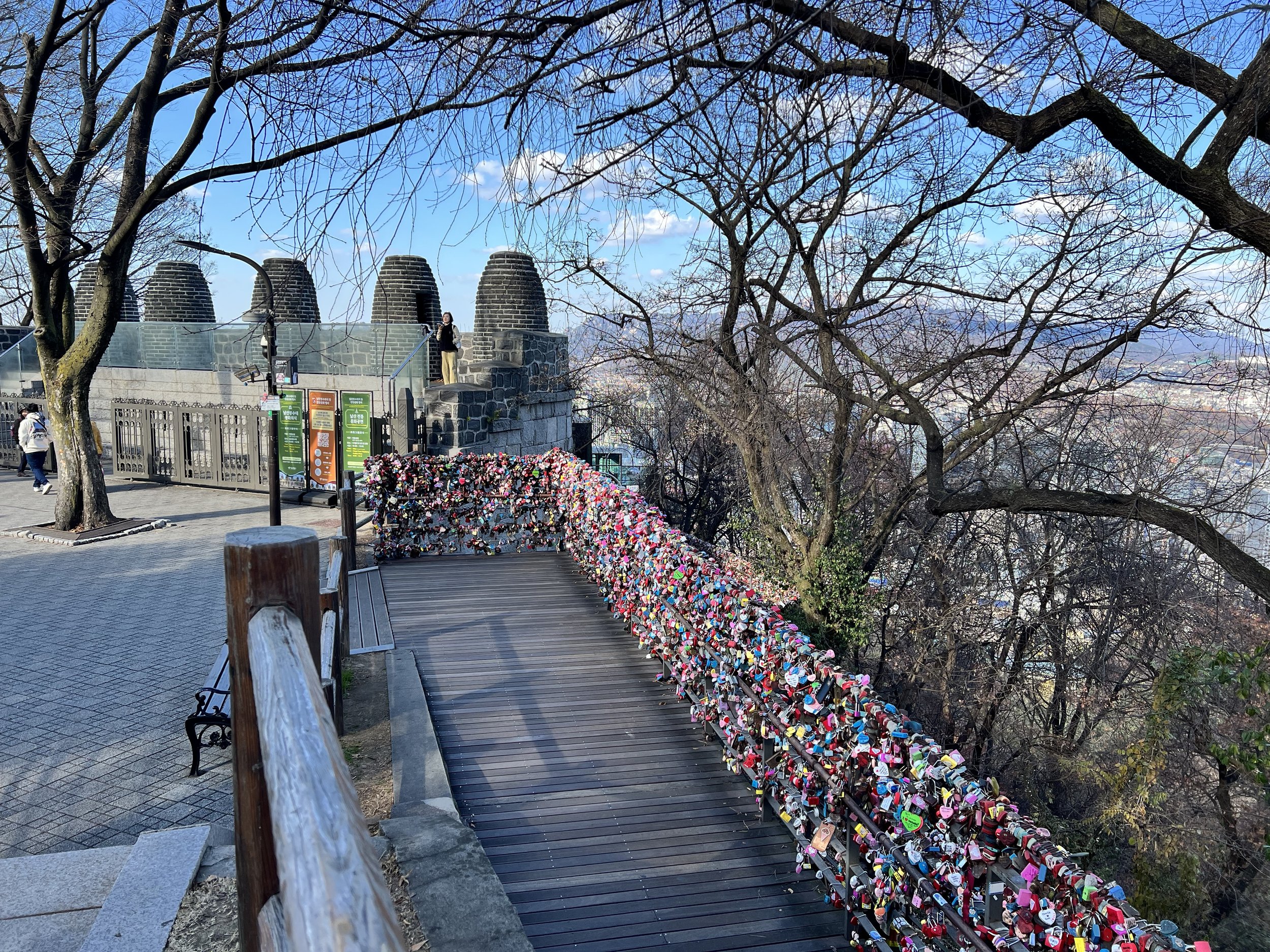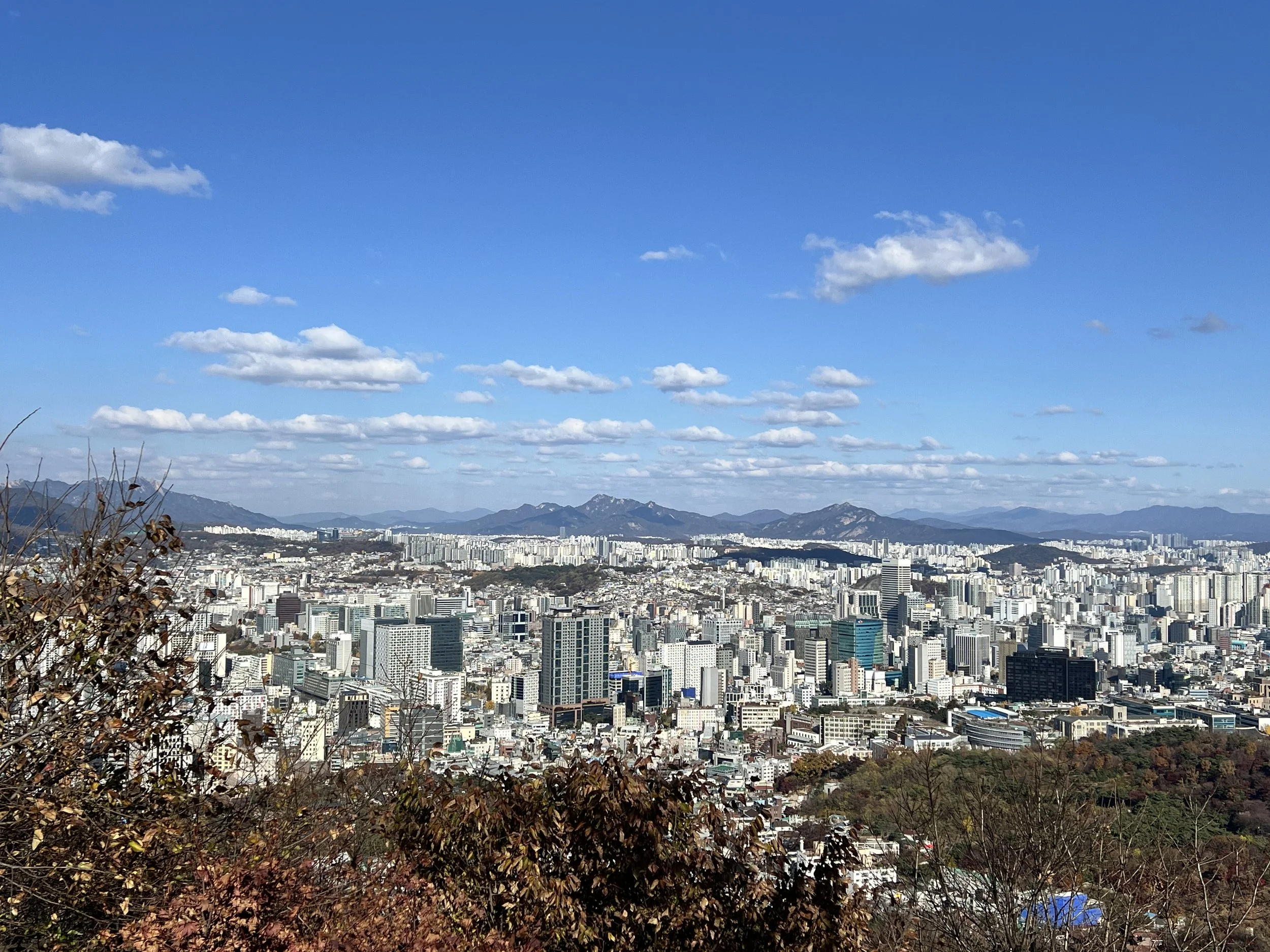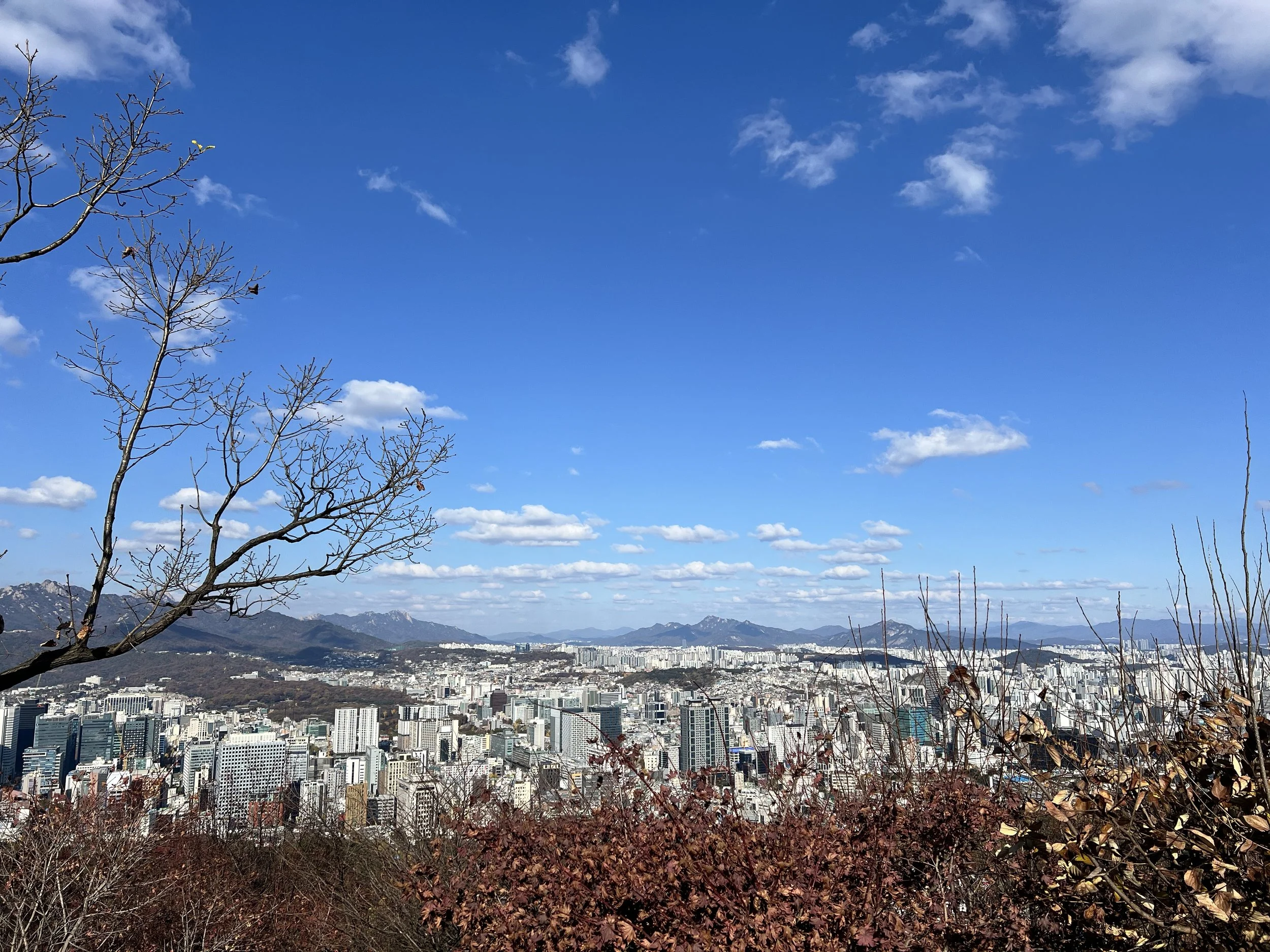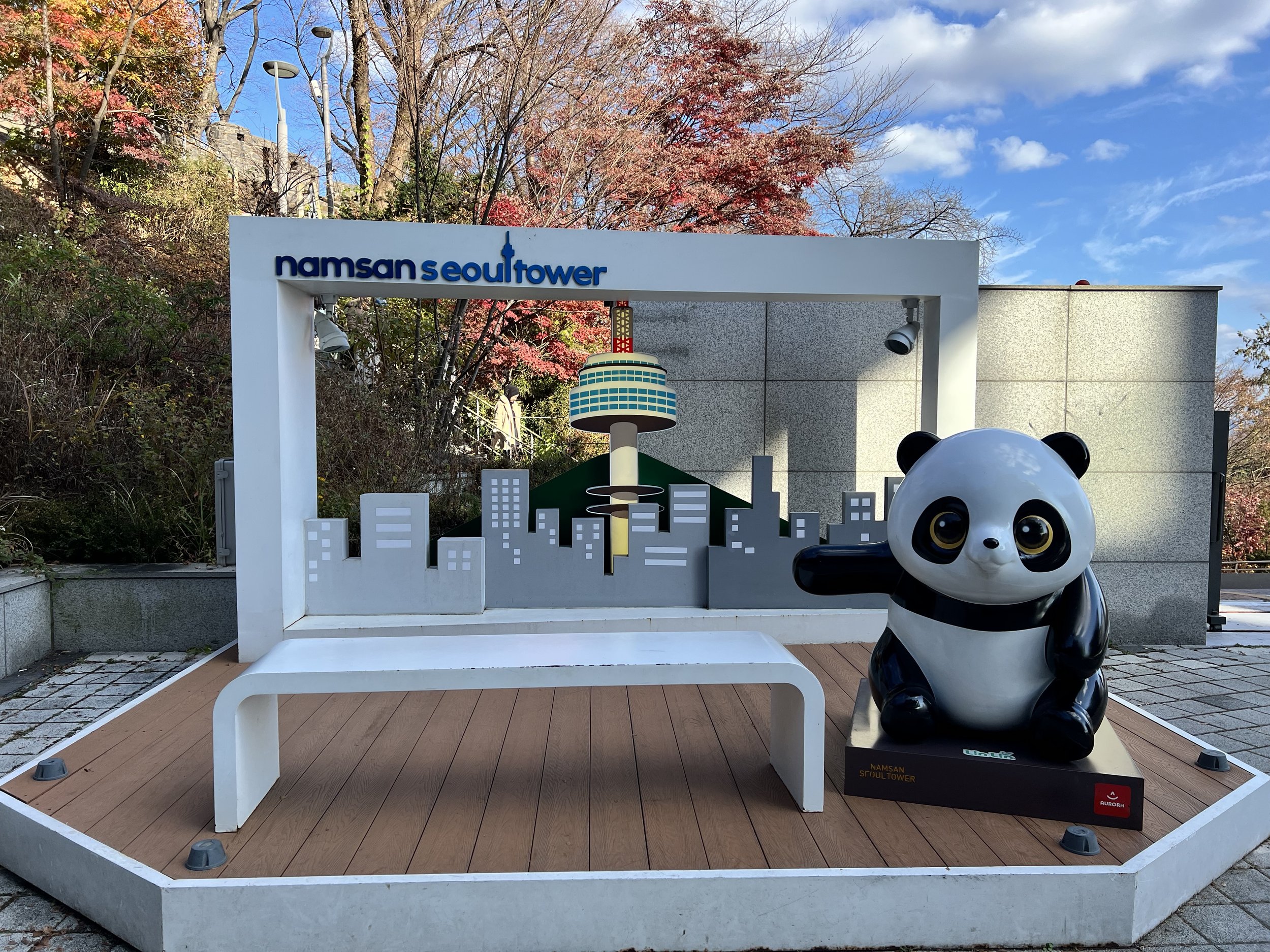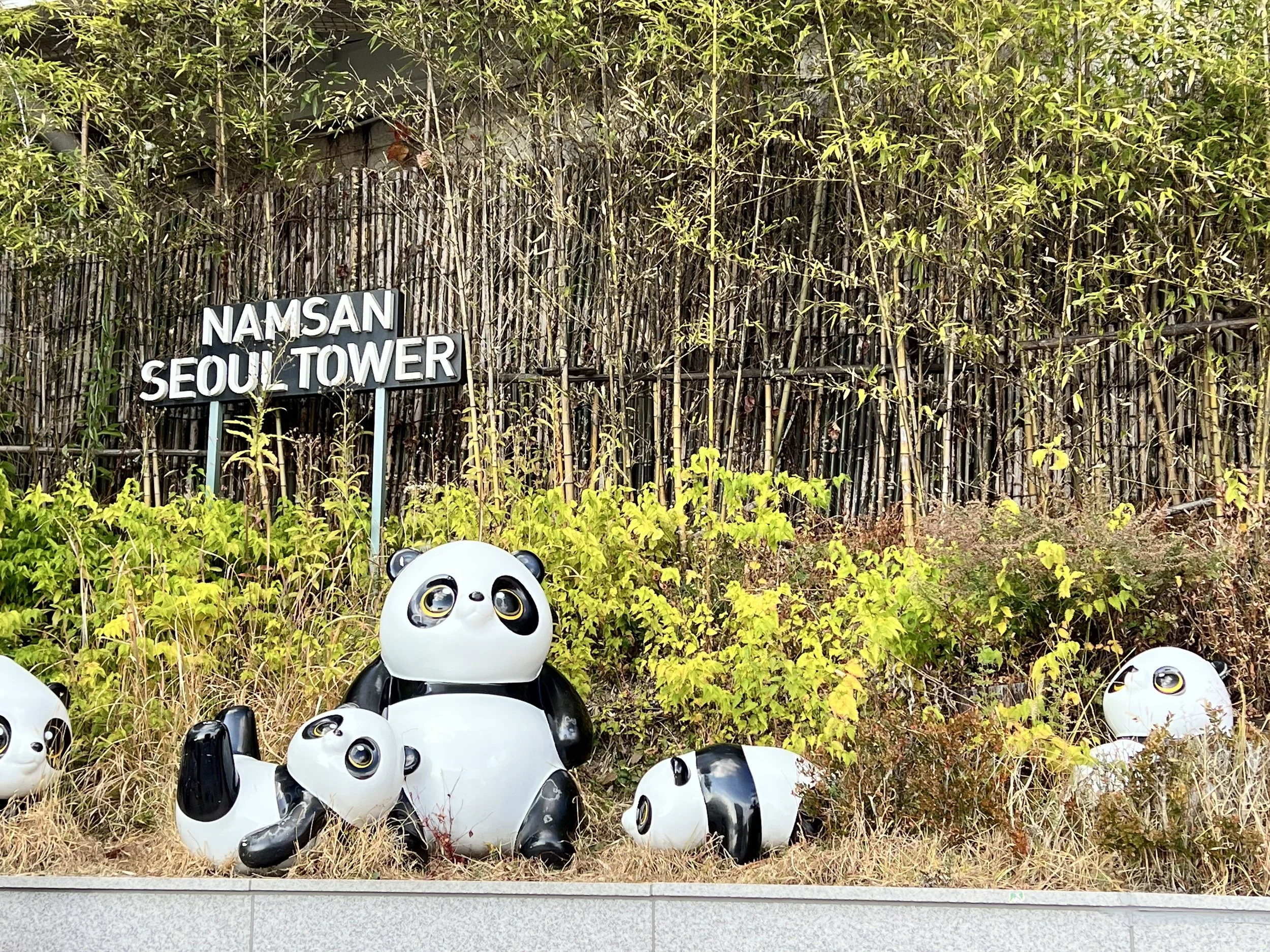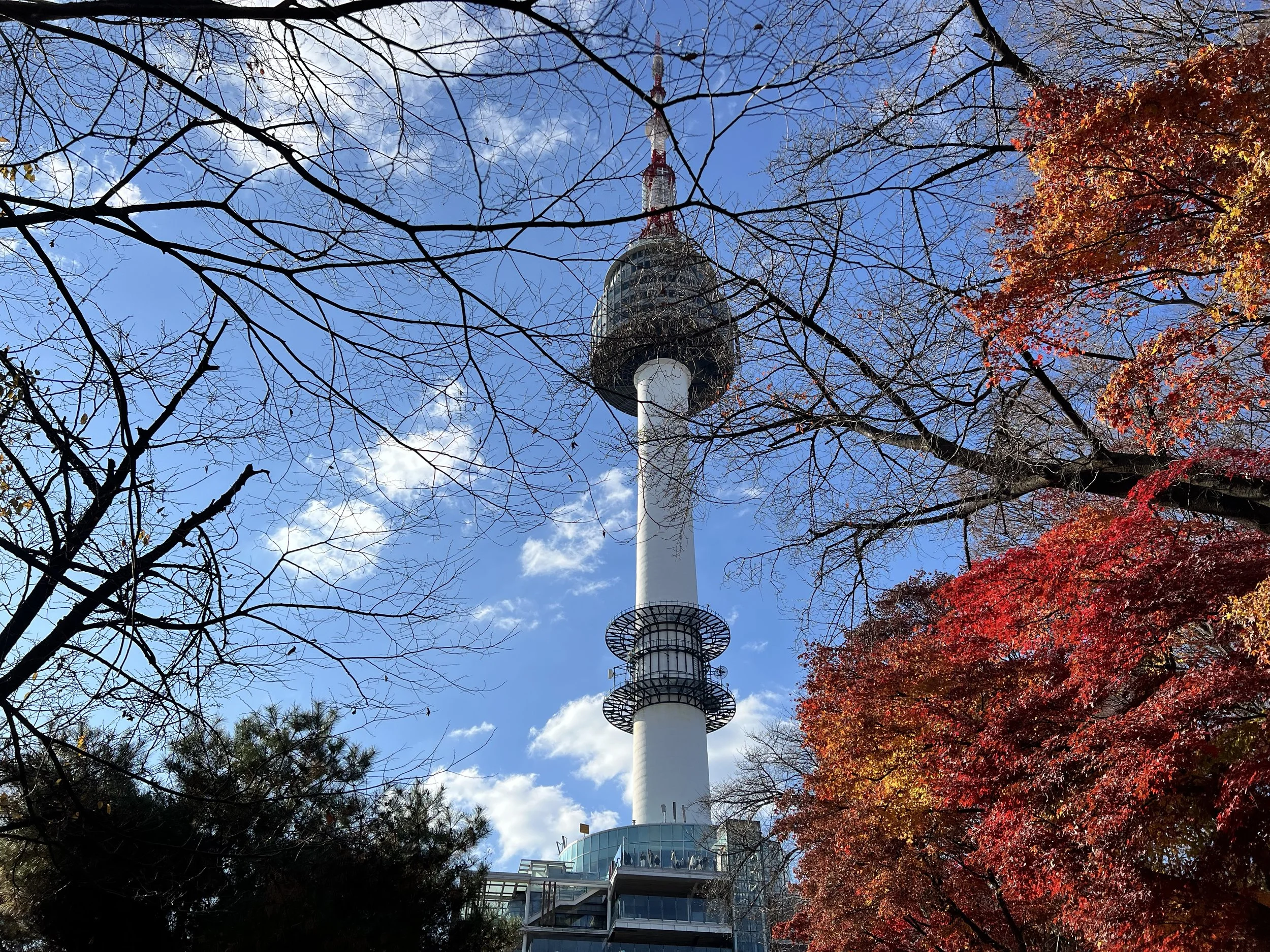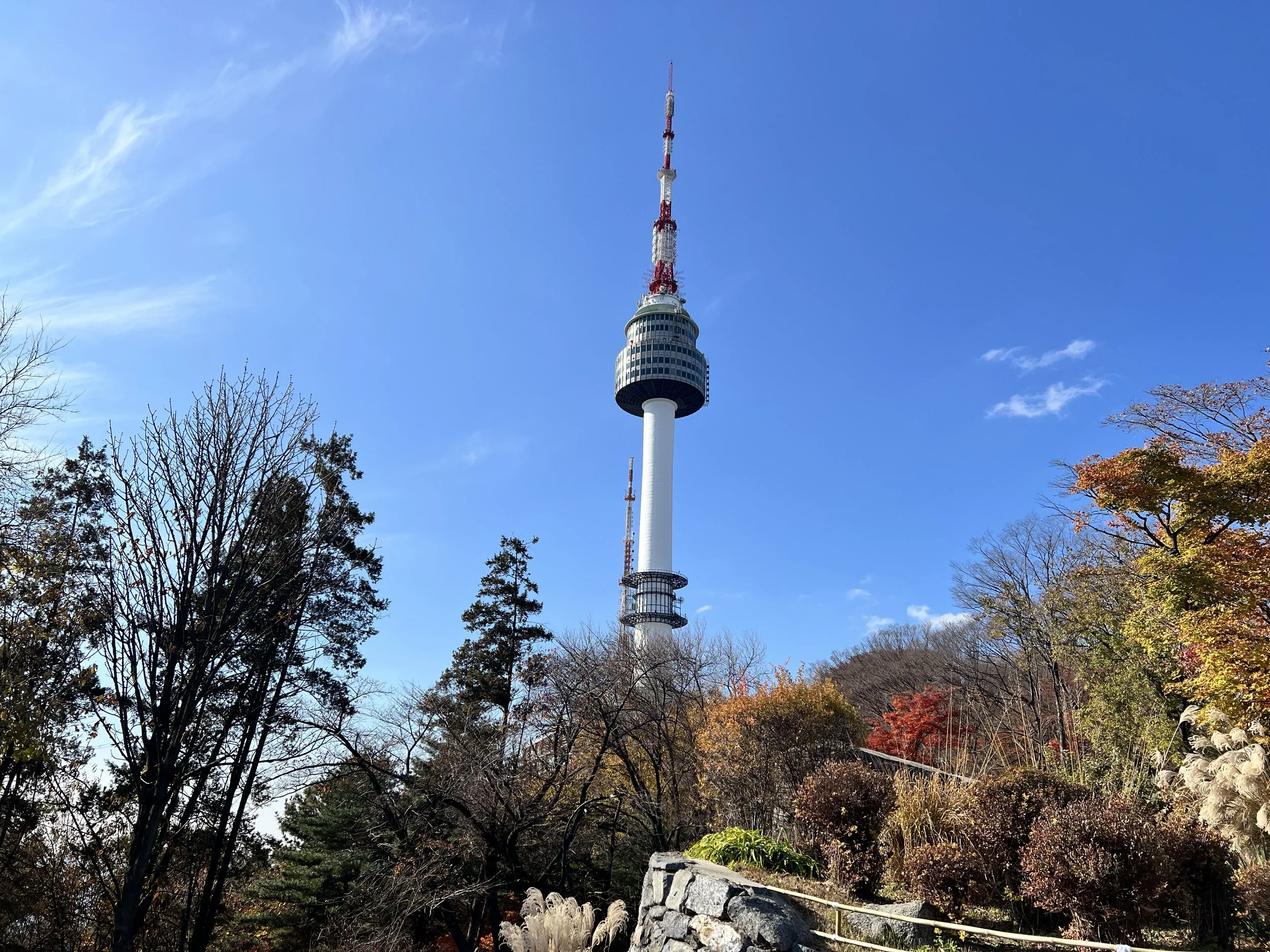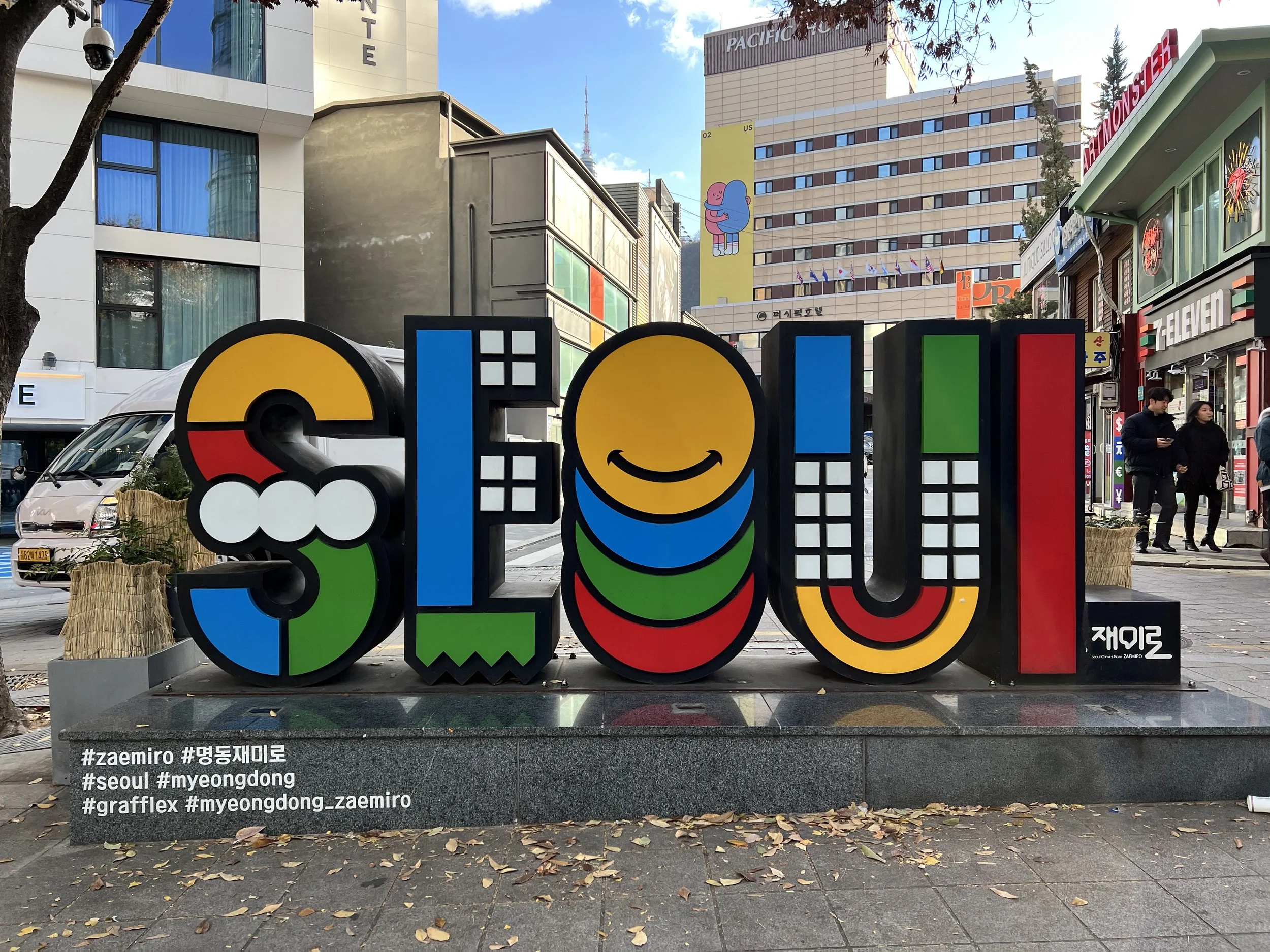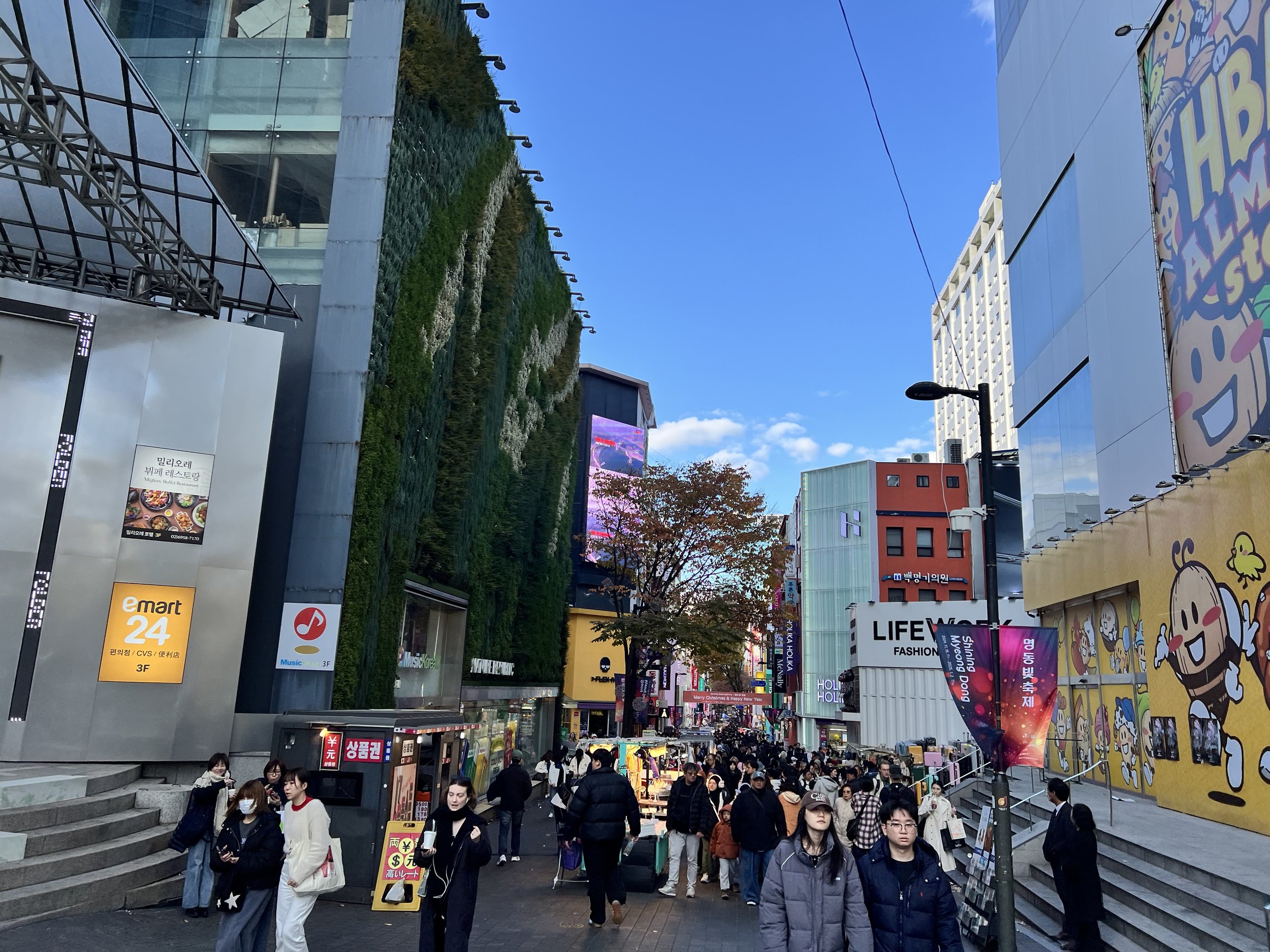N Seoul Tower - Seoul, South Korea
The first stop on my list after arriving in South Korea was N Seoul Tower, one of Seoul’s most recognizable landmarks. I had just flown in from Taiwan and reached the city by early afternoon, so I figured it would make the perfect first destination—a place to stretch my legs, get a panoramic view of Seoul, and maybe catch the sunset if the timing worked out.
After a quick stop at my accommodation near Seoul Station, I decided to walk to the tower. The path wound through quiet city streets that gradually became steeper as I approached Namsan Mountain, where the tower stands. I was surprised not only by the incline but also by how green the city was. Pockets of trees and landscaped parks lined the streets, making the urban climb surprisingly pleasant.
By the time I reached Namsan Park, the autumn colours were in full display. The maples had turned brilliant shades of red and orange, and sunlight filtered through the branches, creating a warm, golden glow. The uphill walk to the tower didn’t feel difficult at all—I kept stopping to admire the scenery and take photos.
At the top, the first thing that caught my eye was the observation deck, offering a sweeping view of Seoul’s skyline. From up there, the city stretched endlessly in every direction—mountains on the horizon, high-rises glinting in the sunlight. I considered staying for sunset, but since it was still hours away, I decided to explore the area around the tower instead.
Wandering around, I came across rows of fences covered in love locks. It’s a long-standing tradition here where couples, families, and friends attach padlocks to symbolize everlasting love and connection. They sell the locks nearby, and visitors write messages before tossing away the keys—often a metaphor for unbreakable bonds. I learned that once the fences reach capacity, the older locks are cut and recycled, sometimes transformed into art installations displayed elsewhere around the city.
Nearby, I found several animal sculptures scattered across the grounds, most notably pandas. There’s even a small “Panda Garden” photo area featuring panda-themed decorations and statues—playful and charming, especially for visitors looking for a fun souvenir photo. Naturally, I took a few pictures myself before continuing on to a nearby restaurant to grab a late lunch while taking in the view.
After my meal, I began descending the hill on foot and headed toward Myeongdong, one of Seoul’s most popular shopping and food districts. The moment I stepped onto its bustling streets, the energy shifted completely—bright lights, street vendors calling out, and the scent of sizzling food filling the air. It reminded me of Taiwan’s night markets, with crowds of locals and tourists enjoying endless rows of snacks and shops.
I wandered the area twice just to take everything in. I eventually stopped for a fish cake skewer and a small cup of hot broth, simple but comforting after the chilly walk down from the mountain. The food stalls were packed, and everyone seemed to be enjoying the shared rhythm of city life—eating, talking, laughing.
As the evening light faded, I started walking back toward Seoul Station, reflecting on how easy the city is to navigate on foot. Wide sidewalks, clean streets, and a mix of historic buildings nestled among modern skyscrapers make Seoul a fascinating blend of old and new. It was the perfect way to begin my time in South Korea—one that set the tone for the rest of the trip.
History & Background
N Seoul Tower (Namsan Seoul Tower, 남산서울타워) stands 236 metres tall atop Namsan Mountain in central Seoul, reaching a total height of 480 metres above sea level. Built in 1969 as a communication and observation tower, it opened to the public in 1980 and quickly became one of the city’s most popular landmarks.
The tower is surrounded by Namsan Park, a beloved green space in the heart of Seoul, known for its walking trails, cherry blossoms in spring, and vibrant foliage in autumn. At night, the tower is illuminated with colourful LED lights that change seasonally, symbolizing messages of harmony and hope.
The love locks tradition began in the early 2000s and has since become one of the most iconic features of N Seoul Tower. Visitors from all over the world participate, turning the site into a symbol of affection and connection.
Getting There
From Seoul Station, I made my way to N Seoul Tower on foot. There are options to take the Namsan Cable Car or a local shuttle bus up the mountain, but I decided to walk to enjoy the scenery along the way. The walk was mostly uphill, weaving through city streets before transitioning into the green paths of Namsan Park. It was a steady climb, but the fall colours made it worthwhile—trees glowing in shades of orange and red lined the route, and occasional glimpses of the city below kept me motivated. For those who prefer a more relaxed trip, the cable car is a great alternative offering a short ride with panoramic views of Seoul as you ascend.
Route Overview
Distance: 12.84km out & back (Seoul Station)
Total elevation gain: 324 m
Duration: 2 hr 58 min (with breaks 3 hr 25 min)
Difficulty: Intermediate
Peak: Mt Namsan 남산 270m
Cost Breakdown
Food: ₩15,500

